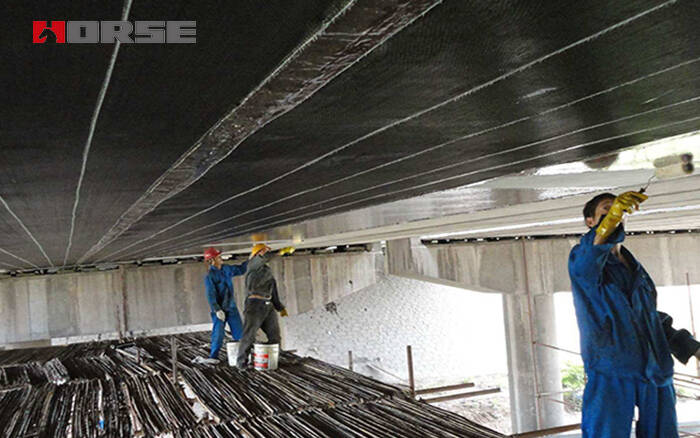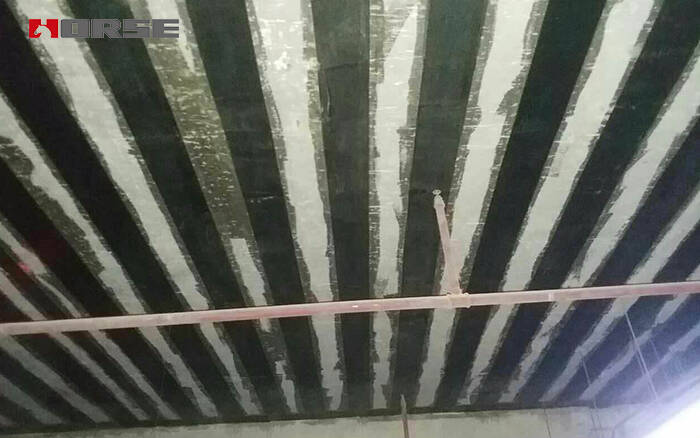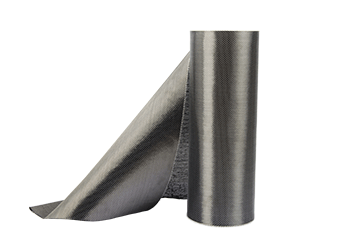Solutions
Horse Construction offers full range of structural strengthening materials with technical supports, documentation supports, products supports, project supports.
CFRP strengthening concrete

The composite material is composed of two or more single-layer boards of different materials or anisotropic single-layer boards of the same material and different fiber laying directions. They have macroscopic non-uniformity in the thickness direction, and this non-uniformity can cause coupling effects. That is, the in-plane force of the materiald plate will cause bending and torsion deformation, while the bending moment and torque will cause in-plane deformation. This coupling effect makes the mechanical analysis of the materiald plate complicated. In addition, the material is anisotropic, and due to the diversity of fiber laying directions, it usually does not have a certain material orientation.
Therefore, its destruction mechanism and form are much more complicated than the structure of uniform continuous linear elastic materials and isotropic materials. Delamination failure is unique to materiald structures. It can weaken the mechanical properties of materiald structures and make the structure fail prematurely under in-plane or bending loads.
Basic principles of composite reinforcement
Carbon fiber cloth has different tensile strength in each direction due to the different carbon fiber arrangement directions. When the fiber direction and force direction of carbon fiber cloth are the same, the tensile strength is the highest. On the contrary, the tensile strength is the lowest. Generally speaking, the typical failure form of component bending failure is to produce concentrated cracks that traverse the tension zone to the compression zone. After the surface of the component tension zone is pasted with carbon fiber cloth, the cracks are difficult to expand further when the component is loaded. Therefore, the concentrated cracks in the middle of the span are "dispersed" into short and fine cracks and evenly dispersed in the tension zone of the component, which increases the height of the compression zone of the component section. With the reinforcement of carbon fiber, the bearing capacity of the bending member is increased.
Advantages of composite reinforcement and discussion opinions
Fiber composite materials have been gradually used in the reinforcement of bridge structures due to their light weight, high strength, ease of construction, and corrosion resistance. Among the three fiber materials, carbon fiber materials are the most widely used. Among the carbon fiber materials, carbon fiber cloth (CFRP cloth) is the most used. Compared with traditional reinforcement technology, carbon fiber cloth reinforcement has obvious advantages:
1 Light and thin
After the carbon fiber cloth is pasted, the weight per square meter is less than 1.0kg (including the weight of resin), and the thickness of the pasted layer is only about 1.0mm. After reinforcement and repair, the weight of the original structure and the size of the original components are basically not increased, and the use space of the building will not be reduced.
2 High strength and high efficiency
Due to the excellent physical and mechanical properties of carbon fiber cloth materials, it can make full use of its high strength and high elastic modulus characteristics in strengthening and repairing concrete, improving the bearing capacity and ductility of concrete structures and components, and improving their stress performance, to achieve the purpose of efficient reinforcement. (Tensile strength is generally above 3500MPa, while steel is 250-550MPa, concrete is 3.5-7MPa).
3 Easy to construct
Carbon fiber materials are used to reinforce the concrete structure. The construction is simple, the work efficiency is high, the amount of labor is small, and there is no wet operation, and no large construction equipment is required at the construction site.
4 Has good corrosion resistance and durability
The reinforced and repaired concrete structure with carbon fiber cloth has good corrosion resistance and durability, and can resist the corrosion of various acids, alkalis, and salts frequently encountered in buildings. After using this method to treat the structure, it not only does not require regular anti-rust maintenance as required by the steel bonding method, which saves a lot of maintenance costs, but it can also protect the internal concrete structure and achieve a dual purpose.
5 Wide application
Bonding carbon fiber materials to reinforce and repair concrete structures can be widely used in various structural types and various parts of various structural shapes, without changing the structural shape and without affecting the structural appearance.
6 Easy to guarantee construction quality
Because the carbon fiber cloth is flexible, even if the surface of the reinforced structure is not very flat, it can basically achieve an effective adhesion rate of 100%.
7 Good fatigue resistance
Carbon fiber cloth reinforced concrete has undergone a certain number of fatigue cyclic loadings, but its strength and ductility indexes have not shown to be reduced, while ordinary concrete has undergone the same fatigue cyclic loading, its strength and ductility indexes will decrease to varying degrees. Therefore, with the promulgation of relevant specifications and the continuous improvement of reinforcement technology, carbon fiber cloth, as an emerging reinforcement material, will be quickly promoted and applied in structural reinforcement projects.

Suggest
The various advantages of carbon fiber reinforcement are manifested mainly in light weight, easy construction, and significant effects on improving the ultimate bearing capacity, rigidity, ductility, and crack resistance of the structure. The material itself hardly increases weight and has high strength. The strength of carbon fiber after curing is more than ten times that of steel. Therefore, the strength of the reinforcing material must be fully exerted. The carbon fiber paste requires greater deformation of the reinforcing member. In the case of small deformation, the stress hysteresis of carbon fiber-bonded reinforcement is greater than that of steel-bonded steel. Therefore, when the bearing capacity of components differs greatly, steel-bonded reinforcement should be preferred.
Problems that should be paid attention to in the construction of carbon fiber reinforcement:
1 The main agent and curing agent must be configured in accordance with the design requirements to prevent the wrong materials or uneven mixing of the glue. Pay attention to the ambient temperature and humidity during construction, and pay attention to the product storage conditions and storage time to avoid affecting product quality.
2 The selection of suitable glue varieties must be selected according to the design requirements, paying attention to the curing agent. The amount of glue should not be too large at one time, lest the reaction heat cannot be released in time due to the delay of brushing, and the high temperature of the construction environment will easily cause the glue to solidify too fast and it is too late to apply.
4 The concrete surface is uneven, the polishing and leveling construction is not correct, the carbon fiber cloth pasted at one time is too wide, the concrete surface is uneven, and the corners are inconsistent, which will cause the carbon fiber and the base layer to produce hollowing, which will affect the reinforcement effect of the carbon fiber cloth.
You can find anything here you are in need of, have a trust trying on these products, you will find the big difference after that.

High strength, unidirectional carbon fiber fabric pre-saturated to form a carbon fiber reinforced polymer (CFRP) fabric used to strengthen structural concrete elements.

High strength, unidirectional carbon fiber sheet pre-saturated to form a carbon fiber reinforced polymer (CFRP) sheet used to strengthen structural concrete elements.

Two-components modified epoxy resin adhesive, with high quality plastic tube, double cartridge package for anchoring